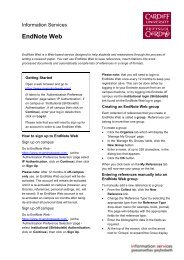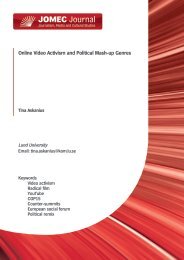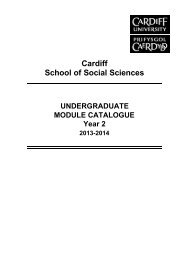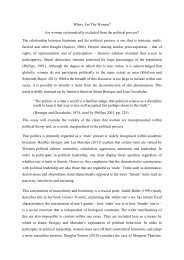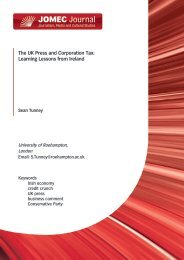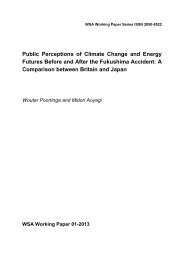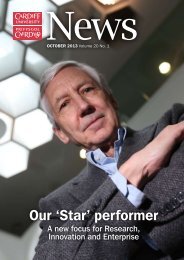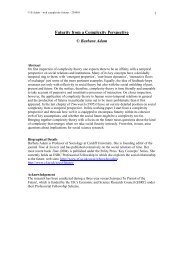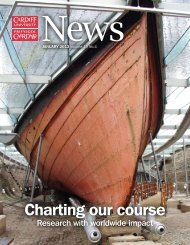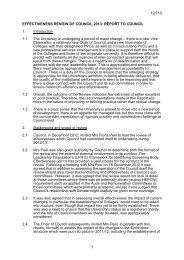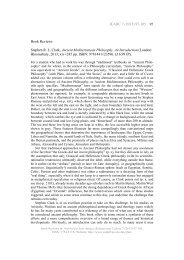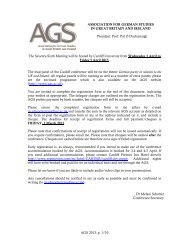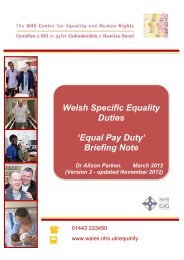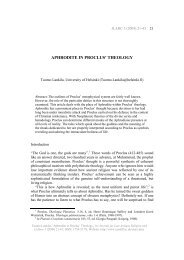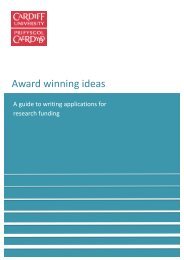Seeing through HIV's disguises - Cardiff University
Seeing through HIV's disguises - Cardiff University
Seeing through HIV's disguises - Cardiff University
Create successful ePaper yourself
Turn your PDF publications into a flip-book with our unique Google optimized e-Paper software.
NEWS<br />
Saving Station X<br />
The famous Bletchley Park code-breaking centre has new hope, thanks to a<br />
letter signed by some of the country’s leading scientists. Professor Robert<br />
Churchhouse, a pioneer of computer science at <strong>Cardiff</strong>, was one of them…<br />
In 1952, the story of how code<br />
breakers at Bletchley Park cracked<br />
the German Enigma device<br />
remained an official secret.<br />
A young Robert Churchhouse<br />
certainly had heard nothing about it,<br />
despite being taught Mathematics at<br />
Manchester by two of the men who<br />
had broken the code – Alan Turing<br />
and Max Newman.<br />
Reporting for his first day of national<br />
service to work on ciphers at GCHQ<br />
(Government Communications<br />
Headquarters) in Cheltenham, he was<br />
asked to sign the Official Secrets<br />
Act. He was then handed a thick<br />
typescript book.<br />
The book told an<br />
incredible story of a<br />
German code machine<br />
with an astronomical<br />
number of combinations<br />
which were continuously<br />
changing.<br />
Professor Churchhouse said: “I was<br />
amazed. I asked: ‘How could you solve<br />
this?’ They told me: ‘Well, we did.’ ”<br />
Professor Churchhouse discovered<br />
that most his colleagues had served<br />
during World War II at GCHQ’s<br />
forerunner, Station X at Bletchley<br />
Park, a converted country house in<br />
Buckinghamshire.<br />
From them, he learned more about<br />
the Enigma machine – a deceptively<br />
simple-looking typewriter-style<br />
device used by the German military<br />
to send messages. When a key on the<br />
typewriter was pressed, a combination<br />
of rotors and wires caused a bulb<br />
marked with another letter to light<br />
up, giving the code. The complication<br />
was that there are 1090 possible<br />
Enigma set-ups. Each time a key was<br />
pressed, at least one rotor moved on,<br />
meaning that there would always be a<br />
different substitution alphabet.<br />
8<br />
Professor Churchhouse also learned<br />
about the work his colleagues<br />
had done at Bletchley Park. How<br />
mathematicians, engineers, linguists<br />
and lawyers worked together to<br />
break the Enigma messages. Of the<br />
outstanding bravery of servicemen<br />
who captured Enigma machines and,<br />
vitally, the codebooks giving the rotor<br />
settings for the month – all without the<br />
knowledge of German High Command,<br />
who believed to the end of the war<br />
that Enigma remained unbroken.<br />
Bletchley Park was also a nursery<br />
for the computer age. Another, even<br />
more complex, code machine was<br />
used for the highest level German<br />
military messages – known by the<br />
British as “Tunny”. This has 12<br />
wheels and 10150 possible settings.<br />
However, without ever having seen a<br />
Tunny machine, the Bletchley team<br />
deduced how it worked and built a<br />
giant, valve-powered computer of<br />
their own to crack it. The machine<br />
was known as Colossus and Professor<br />
Churchhouse’s two former lecturers,<br />
Professors Newman and Turing, were<br />
among the men who designed it.<br />
Professor Churchhouse left GCHQ<br />
after ten years. In 1971, he was<br />
invited to <strong>Cardiff</strong>, to take up the first<br />
Chair in what was then a very small<br />
School of Computer Science.<br />
However, his interest in Bletchley<br />
Park remained with him. The work on<br />
Enigma features in his book Codes<br />
and Ciphers. During the 1980s,<br />
teaching a course on data security<br />
to third year undergraduates, he was<br />
able to call in a favour from his old<br />
employers at GCHQ, and borrow an<br />
Enigma machine to show the students.<br />
The workings of the machine was<br />
sometimes set as an exam question<br />
although, perhaps considerately,<br />
Professor Churchhouse never asked<br />
his students to crack the code.<br />
It was therefore logical, when the<br />
School of Computer Science received<br />
a request to help Bletchley Park<br />
earlier this year, that they alerted<br />
Professor Churchhouse, now retired.<br />
Bletchley Park had fallen on hard<br />
times. The Bletchley Park Trust,<br />
which preserves the site on a<br />
charitable basis, needed funding.<br />
Professor Churchhouse explained:<br />
“The main house itself is fine, that’s<br />
where they have the National Museum<br />
of Computing. However, a lot of the<br />
huts in the grounds are in a poor state<br />
of repair, and that’s where groups of<br />
people did some of the most vital work.<br />
“Hut 3, for example, is where they<br />
decrypted signals from the German<br />
Army and the Luftwaffe. Hut 4 is where<br />
those were translated. Hut 6 is where<br />
German Navy ciphers were broken<br />
and Hut 8 determined which messages<br />
should be passed on to the Admiralty.”<br />
In July, Professor Churchhouse and other<br />
leading computer scientists co-signed<br />
a letter to The Times, calling for secure<br />
long-term funding to preserve Bletchley<br />
Park as a resource for the nation.<br />
Professor Churchhouse also carried<br />
out radio interviews explaining the<br />
importance of Bletchley Park. He<br />
believes it should be preserved, both<br />
for its crucial role in the war effort<br />
and in the history of computing.<br />
A WREN operates one of the Bletchley<br />
Park code-breaking machines<br />
He said: “I think it would be a terrible<br />
shame if it was lost or built over.<br />
At least one or two huts should be<br />
kept open, where some of the most<br />
particularly significant work was done.”<br />
Professor Churchhouse with the Enigma<br />
machine he used to teach Computer<br />
Science students at <strong>Cardiff</strong>.<br />
The Times letter, which was also<br />
signed by Professor Nick Fiddian,<br />
Head of the School of Computer<br />
Science and other School members,<br />
had a galvanising effect. The<br />
American computer giant IBM has<br />
announced a large donation to the<br />
upkeep of Bletchley Park. More<br />
recently, a £330,000 grant from<br />
English Heritage will help guarantee<br />
the future of the mansion and talks are<br />
under way on the future of the huts.<br />
Simon Greenish, Director of the<br />
Bletchley Park Trust, said: “'The<br />
letter to The Times on 24th July this<br />
year urged the government to step in<br />
to help save Bletchley Park and was<br />
signed by 97 eminent scientists and<br />
heads of department from Universities<br />
around the country. The publication<br />
of this letter coincided with a visit<br />
to Bletchley Park by Their Royal<br />
Highnesses The Prince of Wales and<br />
The Duchess of Cornwall.<br />
“The combined events of that day<br />
triggered media and public interest in<br />
Bletchley Park on an unprecedented<br />
scale. The Bletchley Park website,<br />
www.bletchleypark.org.uk received<br />
a record 278,000 hits and public<br />
donations came in at a rate the<br />
Bletchley Park Trust had never<br />
experienced before.<br />
“I believe that the awareness in the<br />
UK of the need for the restoration of<br />
Bletchley Park was greatly enhanced<br />
by the combined events of both the<br />
Royal Visit and the letter to The<br />
Times that day and the Bletchley Park<br />
Trust is enormously grateful to the 97<br />
scientists for their support. We are<br />
now far more optimistic that the site<br />
can be restored for future generations.”



